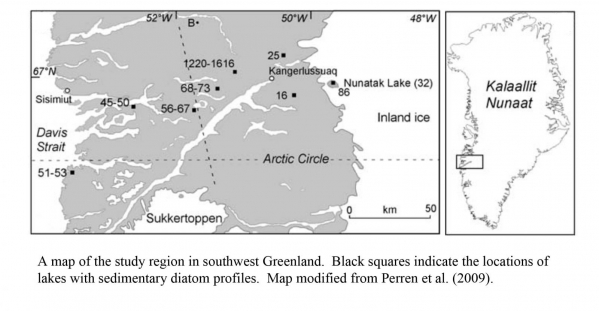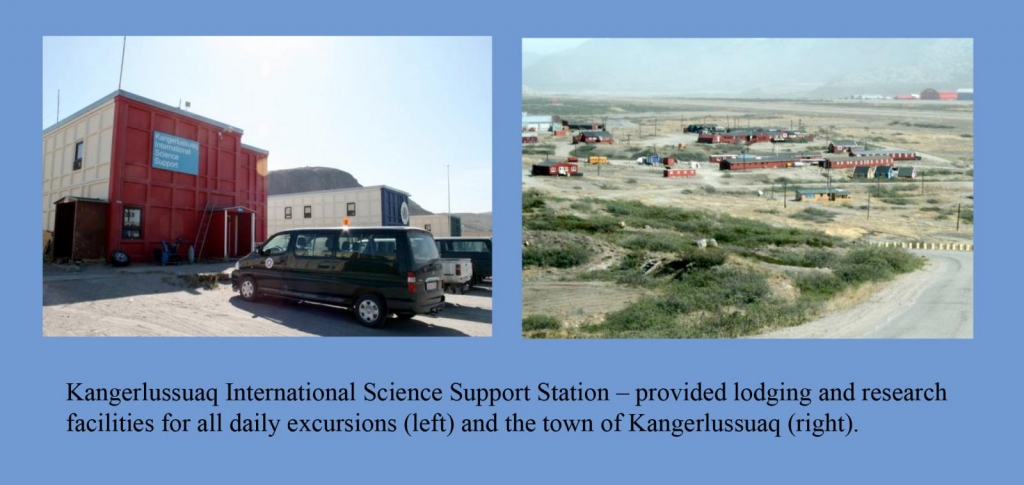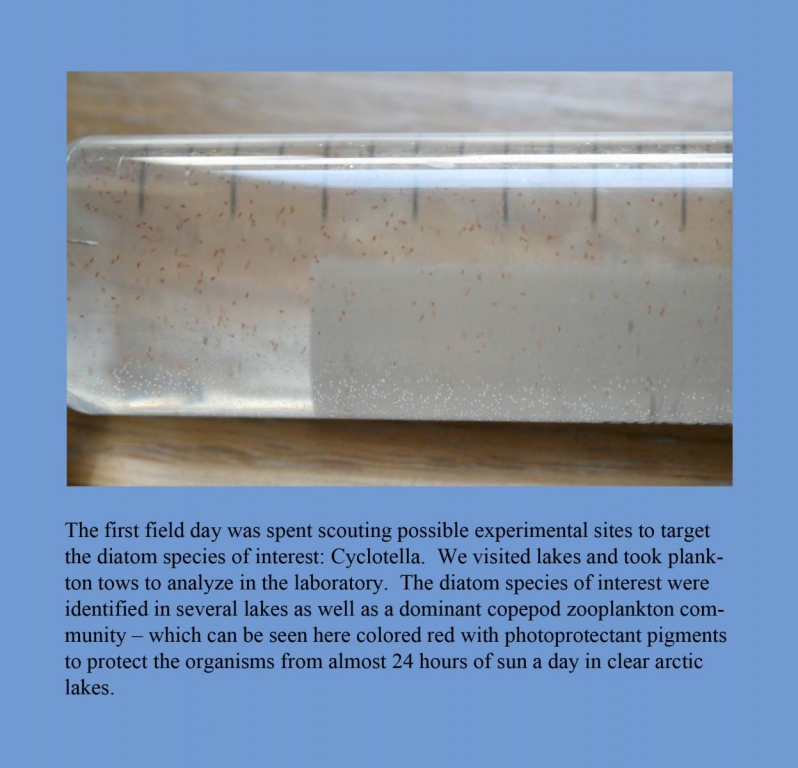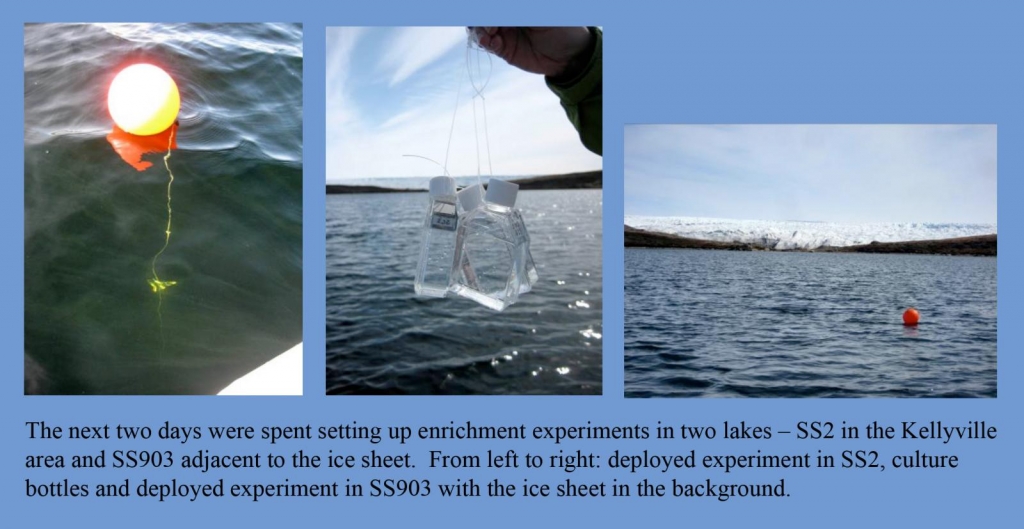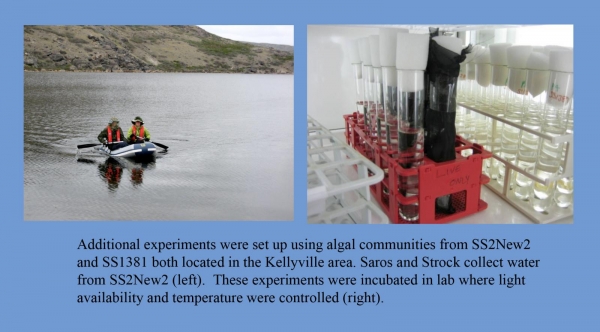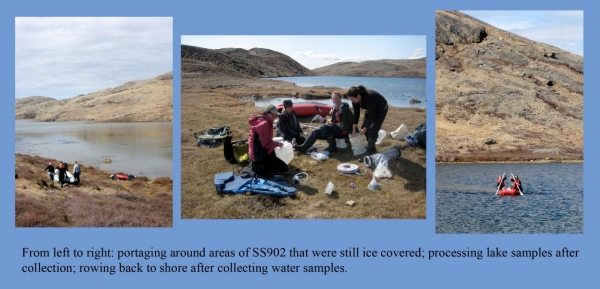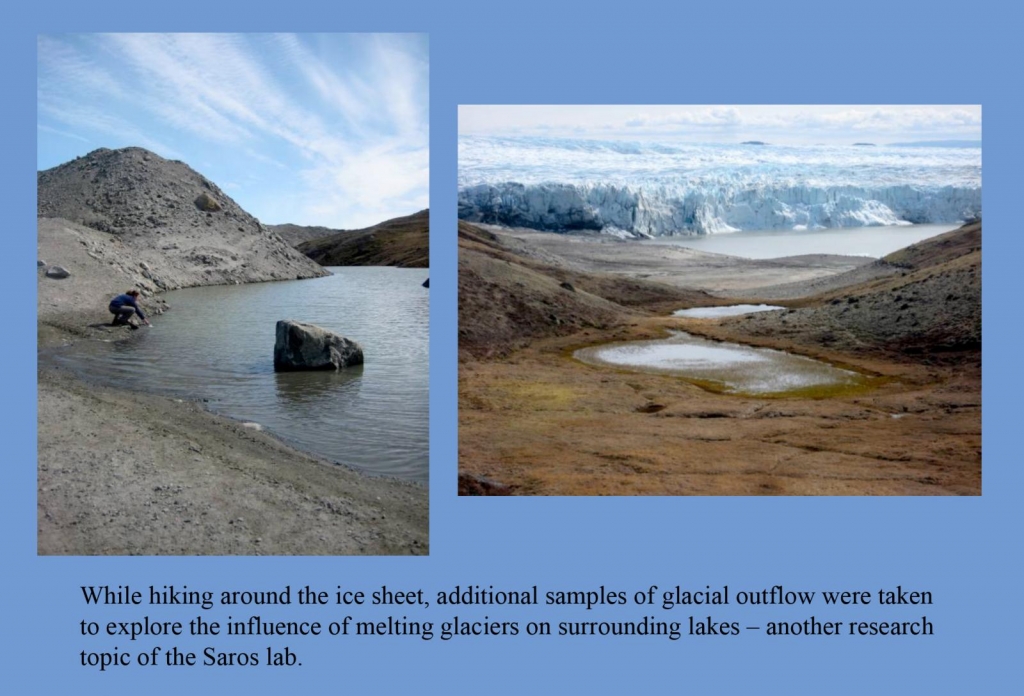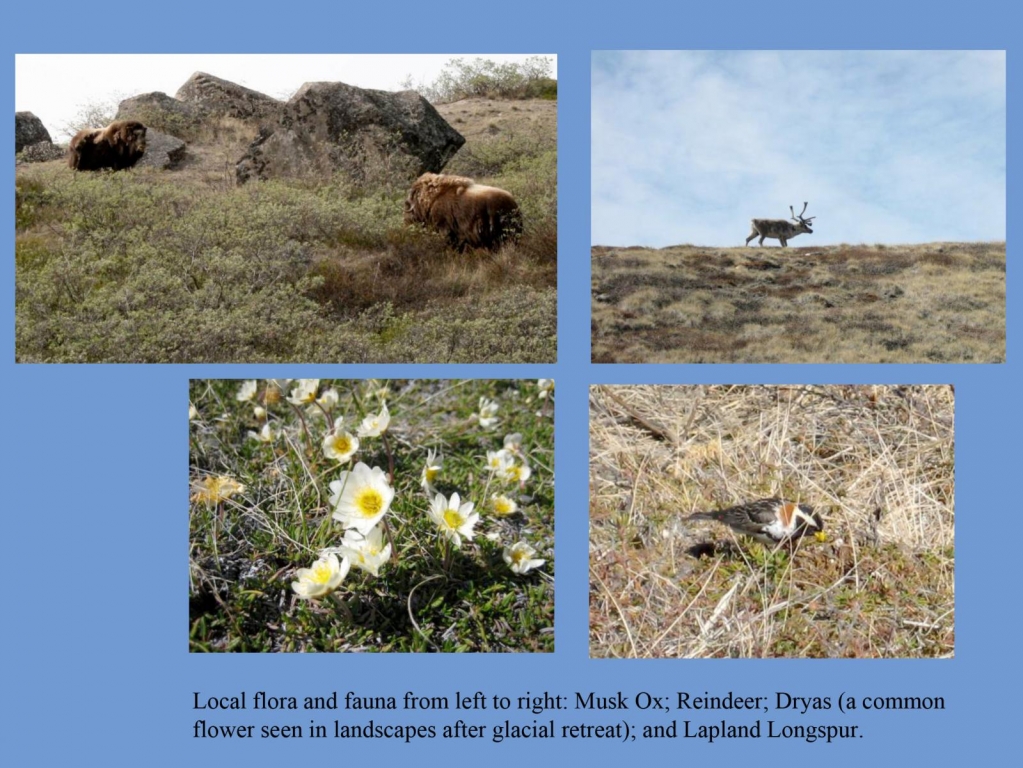
Exploring Climate-Induced Changes in West Greenland Lakes
West Greenland Lakes
Exploring Climate-Induced Changes in West Greenland Lakes
Kristin Ditzler Strock & Jasmine Saros, Climate Change Institute, University of Maine
John Anderson, Loughborough University & Suzanne McGowan, University of Nottingham
Dates: June 14th – June 28th 2011
Funding for this project was generously provided by the Dan and Betty Churchill Exploration Fund & the Gokcen Fund.
Across the Arctic, lake sediment records provide some of the few key archives documenting rates of ecosystem change in this region since the last ice age. In particular, striking changes in communities of diatoms (a type of algae that responds rapidly to environmental change and leaves a fossil in lake sediments) have occurred over the last 150 years. Shifts in diatom community structure often occur rapidly in response to ecological perturbations to lakes. If ecological relationships between diatom community structure and environmental parameters are well understood, changes in diatom communities can provide key mechanistic information on how lake ecosystems are responding to environmental change.
In numerous lake sediment records from the high Arctic of Canada and Europe, diatom species generally associated with warmer conditions increased at unprecedented rates during the 20th century (Smol, 2005). Diatom communities in lake sediments from west Greenland are dramatically different from those in the rest of the Arctic- they are rich in these “warmer” water diatoms throughout the Holocene, not just the last century (Perren et al. 2009). This difference has raised questions about what we can use diatoms to infer in the Arctic, and suggests the need to clarify the ecological traits of key diatom taxa in order to advance our understanding of drivers of change. Understanding the ecology of these species is key to interpreting paleolimnological records across this region. Ultimately, diatom records from arctic lakes may be providing much richer signals of the response of these lake ecosystems to climate change than previously thought, and a greater understanding of the ecology of key diatom taxa will provide important tools to decipher the extent to which direct and indirect effects of climate are contributing to rapid ecological change in the Arctic. The objective of this study is to couple comparative lake sampling with microcosm experiments to provide key ecological information that will enhance interpretation of climate-induced ecological changes from several existing diatom records from southwest Greenland.


